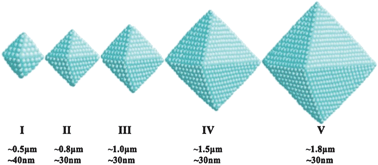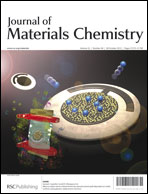Following the previous report on the fabrication of three-dimensional hierarchical SnO2 octahedra consisting of nanoparticles via a rapid sonochemical process (Wang et al., Chem.–Eur. J., 2010, 16, 8620–8625), the influences of ultrasonic time, amplitude, ratio of H2O–diethylene glycol (DEG), and different Sn salts on the morphology and size of SnO2 have been further investigated in the present article. The hierarchical SnO2 octahedra with average edge lengths of 0.5, 0.8, 1.0, 1.5 and 1.8 μm composed of 30–40 nm SnO2 nanoparticles have been successfully obtained. The power conversion efficiencies of dye-sensitized solar cells (DSSCs) based on the hierarchical SnO2 octahedra photoanodes varied from 5.57%, 5.82%, 6.40%, 6.45% to 6.80% with the corresponding octahedron sizes of 0.5, 0.8, 1.0, 1.5 and 1.8 μm, respectively. Intensity-modulated photocurrent spectroscopy (IMPS), intensity-modulated voltage spectroscopy (IMVS) and UV-vis diffuse spectroscopy were used to investigate the influences of the SnO2 octahedron size on the photovoltaic performances of DSSCs.


 Please wait while we load your content...
Please wait while we load your content...